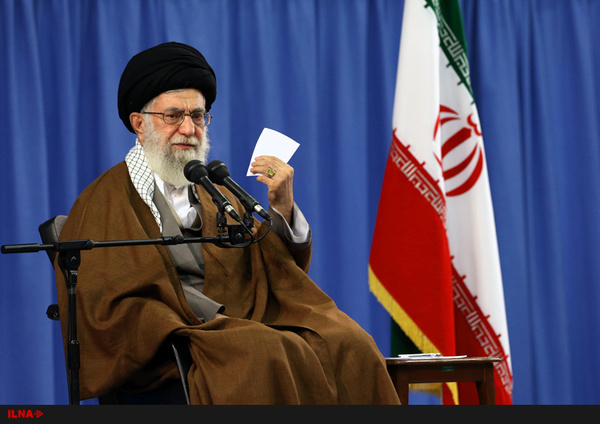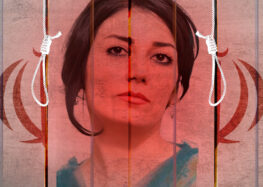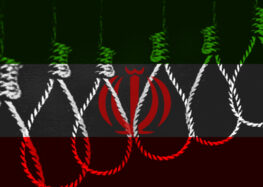Woman Who Removed Headscarf in Public Sentenced to Prison as Supreme Leader Tries to Diminish Hijab Protests

Supreme Leader Ali Khamenei has described recent demonstrations in Iran against the country’s compulsory hijab rule as “small and insignificant,” which raises the question of why people are being sentenced to prison for engaging in the peaceful protest.
“My gift on Women’s Day, March 8: A preliminary court sentenced me to 24 months in prison, 21 months of which has been suspended for five years,” tweeted Narges Hosseini.
“Before I was arrested, I expected such a sentence,” she added. “But after my trial, I thought the most I would get was a monetary fine. I was always too naive and optimistic.”
Without mentioning her by name, Tehran Prosecutor Abbas Jafari Dowlatabadi announced that Hosseini had been convicted of “encouraging people to engage in corruption by removing the hijab in public” and “committing a forbidden act in a public space.”
Hosseini, 32, was detained on January 29, 2018, for removing her head scarf while standing on a utility platform on a busy street in Tehran and waving it on a stick like a flag.
Since January, at least 30 women and men have been arrested for repeating similar actions in various cities across the country. They have come to be known as the “Girls of Revolution Street.” In addition to Hosseini, they include Vida Movahed, Azam Jangravi, Shima Babaei, Shaparak Shajarizadeh and Maryam Shariatmadari.
The protests have received support from Iranian rights activists inside and outside the country, but on March 8, International Women’s Day, the supreme leader said Iran was prepared to “crush” the protestors.
“For the past few months, the enemies of Iran have been sitting around in their think tanks trying to make plans to finish off the Islamic Republic in March,” said Khamenei during a speech to his supporters on March 8, 2018, to mark the birthday of the Prophet Mohammad’s daughter, Fatima.
“We saw how the people of Iran responded to them in January and February,” he added. “The Iranian nation is always prepared to crush aggressors and critics.”
“They [enemies of Iran] spent all that money and created all that propaganda to trick a few girls into taking off their scarves, but in the end, what they got from all that effort was small and insignificant,” said Khamenei.
He continued: “But that’s not something I’m concerned about, as much as some of our own elite, which are raising the issue of the so-called forced hijab. These elite, which include journalists, pseudo-intellectuals and clerics, are going in the same direction as the enemy… I hope to God they are not doing so consciously.”
Despite being expected to toe the supreme leader’s line, not all politicians in Iran agree with Khamenei.
Nahid Tajeddin, a female member of the Iranian Parliament from the city of Isfahan, tweeted on March 2: “The Girls of Revolution St. are the same girls who have been stopped behind the gates of gender discrimination in university enrollment quotas, in the workplace, in political participation, in getting government management posts, in sports arenas, in performing live music on stage and…”
In February 2018, the office of President Hassan Rouhani released a government-conducted survey from 2014 showing that nearly half of all Iranians believed at the time that wearing the hijab should be a personal choice.
Since 1980, one year after Iran’s Islamic Revolution, all women in the country have been required to wear the hijab, the head-to-toe covering that conceals all skin except the face.
While this rule must be strictly observed in government buildings and other major institutions such as schools, banks and hospitals, many Iranian women have been pushing the boundaries over the years, including by showing more skin (ankles and wrists) and more hair (by pushing their headscarves back away from their foreheads) especially during the hot summer months.
Describing Western women as “symbols of consumerism” and “instruments of sexual excitement,” Khamenei in his speech said that women appearing in public without the hijab are committing a sin according to Islam.
While his interpretation of Islam is debatable, women who are caught by Iran’s so-called “morality police” for not properly observing the hijab can be arrested, fined, lashed and imprisoned for committing “haram.”
According to Article 638 of Iran’s Islamic Penal Code: “Anyone in public places and roads who openly commits a harām [sinful] act, in addition to the punishment provided for the act, shall be sentenced to two months’ imprisonment or up to 74 lashes; and if they commit an act that is not punishable but violates public prudency, they shall only be sentenced to 10 days to two months’ imprisonment or up to 74 lashes.”






